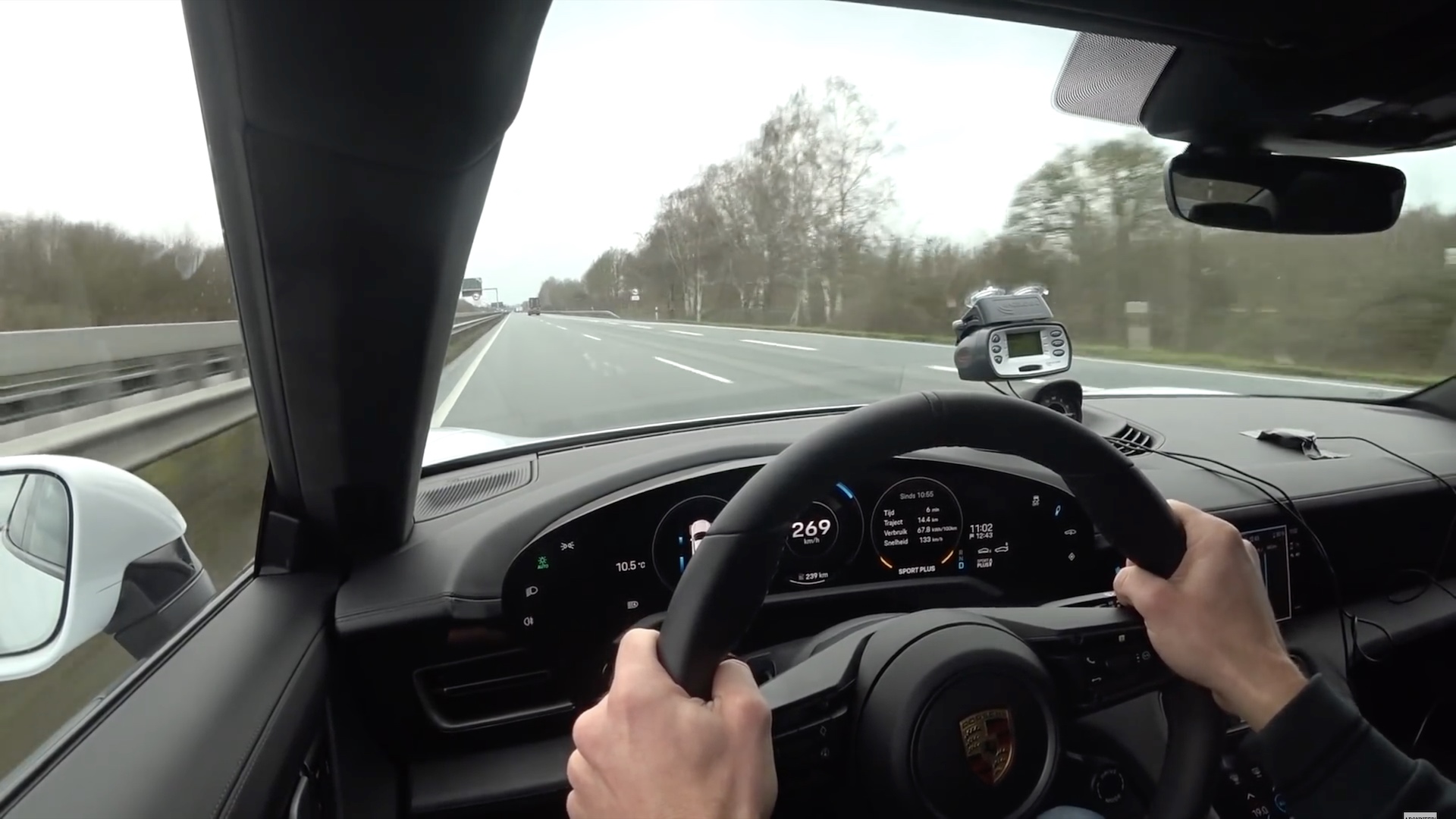

In comparison to the one-and-done Tesla Model S P100D, the Porsche Taycan Turbo S’s ability to hammer out repeated full-throttle launches makes it look like a marathon runner. Yet as footage of a top speed test recently conducted on the Autobahn shows, even the Taycan can’t give ten-tenths forever.
Dutch automotive outlet Autovisie recently got its hands on the top-spec Taycan and as anyone living in a country that neighbors Germany would do, they tested it on the largely speed limit-less Autobahn. There, the publication tortured the Taycan with at least 20 straight launches from zero to 124 mph and found that the Turbo S’s zero-to-62 time slowed by only a tenth of a second between the first and last runs. Pushing onward to 124 mph took an additional seven seconds on the car’s first run and by the time pull number 20 rolled around, reaching that same speed took an extra 8.6 seconds.
After recharging to 88 percent, the tester rejoined the Autobahn, this time to see how long the Taycan Turbo S could maintain its limited top speed of 167 mph (269 kph). Though the Taycan faced an estimated 18-mph headwind, it still surged on up to its V-max, where it sat for about 67 seconds before traffic in the left lane forced the driver to back off.

While the Taycan features an unusual-for-an-EV two-speed transmission on its rear axle, it did little to reduce energy consumption at high speed, where EVs traditionally struggle. Instrument panel readings taken 60 seconds apart during this trial show the Taycan’s estimated remaining range falling from 238 to 220 kilometers—or 148 miles to 137—all in a distance of about 2.78 miles. At its worst, the Taycan estimated the driver was using 78.1 kWh of battery per 100 km driven, or around 0.8 kWh per mile—about a quarter of what you can manage driving a Taycan more economically.
With the road free again, the Taycan’s driver returned the car to its top speed, which it maintained for roughly 40 seconds until, with the accelerator still floored, speed started to fall off on its own. This occurred with about 125 miles of range remaining, so it’s more likely the Taycan was reducing its battery output to prevent overheating that could potentially result in a fire.
Though it’s a shame the Turbo S can’t stay at its top speed for longer, you’re more likely to run into traffic before the car’s limit—even on the Autobahn. It’s still an honorable performance for the Taycan and we’re intrigued to see how Porsche will make it faster in the years to come.
Got a tip? Send us a note: tips@thedrive.com